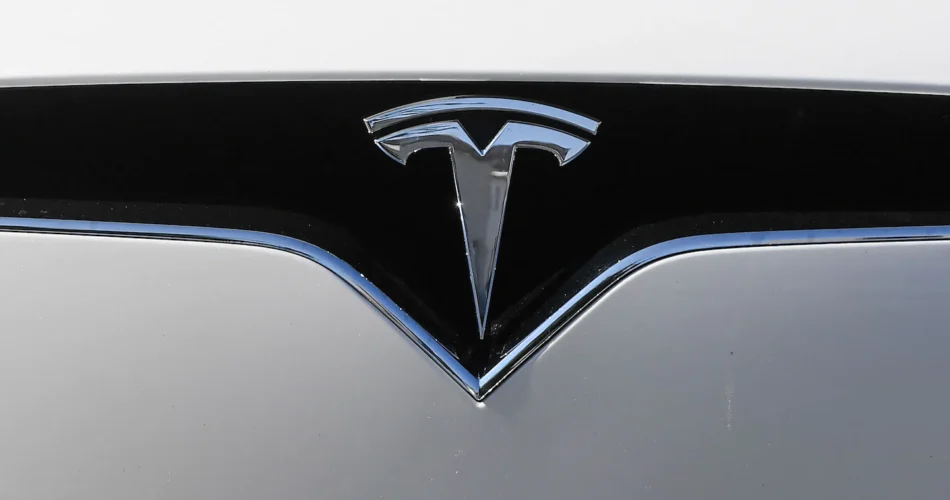“The complaints allege that while utilizing the [advanced driver-assistance] features including adaptive cruise control, the vehicle unexpectedly applies its brakes while driving at highway speeds,” the agency said. “Complainants report that the rapid deceleration can occur without warning, at random, and often repeatedly in a single drive cycle.”
Tesla owners flooded NHTSA‘s website with hundreds of complaints of alleged “phantom braking” earlier this month following a Washington Post report that noted a sharp uptick in the phenomenon. The issue, a glitch in the cars’ forward collision-warning and automatic emergency braking systems, occurs when Tesla’s cars suddenly slow down in response to falsely detected hazards.
Owners began complaining of the issue in larger numbers beginning in November, days after the automaker issued a recall of its “Full Self-Driving” software over a glitch that could lead to phantom braking. More broadly, the surge has followed Tesla’s shift from a multi-sensor perception system combining cameras and radar to a camera-based system that relies on what the automaker calls “Tesla Vision.” The spate of complaints included several common patterns as well as at least one report of an injury.
After The Post’s article earlier in February, NHTSA received about 250 complaints about phantom braking during the following two weeks. That compared to 107 complaints in the prior three months — a steep surge of its own — and only 34 in the preceding 22 months.
Tesla, which disbanded its public relations department in 2020, did not respond to requests for comment. Tesla CEO Elon Musk has repeatedly defended the use of its automated features, calling its Autopilot driver-assistance “unequivocally safer” than normal driving and decrying the “fun police” as the company faced a series of recalls in recent weeks — an apparent reference to federal regulators.
Complaints of phantom braking involving Tesla vehicles also far surpass those for other automakers that also have advanced driver-assistance but largely rely on radar-equipped systems. The increase in complaints shed light on the types of common scenarios in which owners report phantom braking. Among all the complaints, about one-third of the sudden slowdowns occurred on two-lane roads or highways when, for example, an oncoming truck was approaching in the distance, according to a Post analysis. Teslas across the fleet commonly react to such situations in the same way, leaving common patterns emerging in the complaints.
“It’s when the traffic is coming towards me that it randomly throws on the brake,” said Sally Bergquist, of Alexander City, Ala., who experienced repeated sudden slowdowns on her 2021 Tesla Model S on drives to Birmingham, in an interview. “This random braking is really concerning to me.”
The NHTSA complaints are not individually verified by the agency — owners describe the issue they experience, and provide their vehicle identification number along with other identifying information when they send their report. Complaints to NHTSA can — as apparently occurred here — be more frequent as owners learn about the possibility of telling the government about safety problems with their car, so increases in complaints might not always be due to an increase in the rate of problems.
But the sheer number of complaints for Teslas related to phantom braking far outpaced those for other vehicle makes and models, indicating a known problem of growing prominence among the owner population.
The Post’s analysis covered the 2019 Tesla Model 3 along with 2020 through 2022 Tesla Model Y and Model 3 vehicles.
Tesla has faced mounting pressure from NHTSA over Autopilot and its practice of issuing over-the-air software updates to remedy issues with its vehicles, without initiating the formal recall process. The agency is investigating the potential role of Autopilot in about a dozen crashes involving Teslas and parked emergency vehicles while the driver-assistance system was active. Tesla has issued a steady stream of recalls since October, when NHTSA publicly called out the company for its failure to issue a formal recall when it updated its cars to better detect emergency vehicles in low light.
Tesla has aimed to streamline its hardware suite — eliminating the use of radar — as part of its effort to usher in a new self-driving era using the millions of vehicles it has put on the road. The company has given owners dual driver-assistance options in the form of Autopilot, which is largely intended for use on highways, and “Full Self-Driving” beta, which brings driver-assistance functionalities to city and residential streets.
Experts in vehicle perception systems say that a reliance on cameras to navigate roads can sometimes be problematic, since it can be more easily confused than radar about factors like distance or an upcoming billboard.
Some owners who spoke with The Post said they’ve been experiencing phantom braking for months — coinciding with the period when Tesla eliminated radar — but it had previously not occurred to them to report the issue to NHTSA.
Owners described the problem as “serious” and “scary” in emails to The Post, with several describing Tesla’s cruise control features as unusable in light of the problems.
Marlin Myers, 52, of Mechanicsburg, Penn., said repeated phantom braking forced him to stop using cruise control altogether on his monthly drives to Philadelphia on Interstate 76.
Since he bought his Tesla Model Y in June 2021, it’s happened roughly eight times, lurching his car from around 70 mph to 40 mph, with no visible hazard in the vicinity.
“The first one or two times that it happened, you’re shocked by it,” he said. “I very quickly became very cautious about having it on whenever the cars are behind me.”
Myers, who said he otherwise enjoys his Model Y, said he wants Tesla to address the issue — and quickly.
“It seems like we’re not alone,” he said. “Fundamentally, there’s a problem with the car — let’s get it fixed and let’s move on.”



